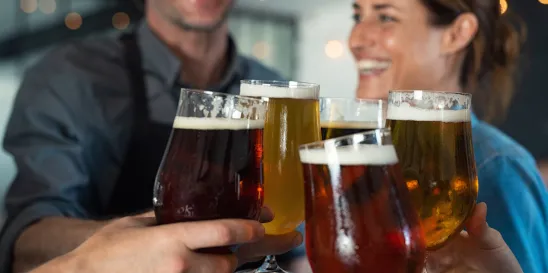As we enter 2024, more and more brands are joining the nonalcoholic beverage space. An increasing variety of nonalcoholic, single-serve, ready-to-drink beverages are marketing the innovative use of indigenous botanicals, herbs or novelty ingredients found in other foods. This innovation has led to product development teams exploring the use of those ingredients for their alcoholic beverage products, but in many instances those ingredients have not been used in or approved for alcoholic beverages in the United States by the Alcohol and Tobacco Tax and Trade Bureau (TTB), leading to challenges with obtaining formula approvals.
BACKGROUND
As a reminder, the TTB requires that all ingredients added to an alcoholic product be determined generally recognized as safe (GRAS) for use in alcohol. If the TTB finds that a product’s ingredient is not GRAS, it can cause significant delays for your product’s market launch. Currently, the TTB’s GRAS determination relies directly on the advice and approval of the ingredient’s use in alcoholic beverages by the US Food and Drug Administration (FDA).
In line with the historic Memorandum of Understanding (MOA) between the two agencies, the FDA (not the TTB) is responsible for determining which ingredients are prohibited from use in food and/or beverage products under the US Federal Food, Drug, and Cosmetic Act. These include food additives, such as substances added intentionally to food, and color additives. The TTB is authorized by law to utilize the services of a government department or agency to carry out its powers and duties under the Federal Alcohol Administration Act. Pursuant to its MOA with the FDA, the TTB regularly consults with the FDA regarding the approval of ingredients in alcoholic beverages and the requirements of label disclosure for certain substances. The TTB’s Beverage Alcohol Laboratory also analyzes alcoholic beverage products for limited and prohibited compounds and enforces these restrictions for alcoholic beverages as per FDA guidance.
OUR GUIDANCE
In light of these challenges, we recommend that before submitting your formula, double-check to make sure all the ingredients and substances added are GRAS and allowable for use in alcoholic beverages specifically. This will help streamline the approval process and avoid potential delays. Below are some tips you should consider:
- Check with the ingredient supplier or manufacturer for the regulatory status of the ingredient and ask for a Technical Data Sheet or Product Specification Sheet that likely contains the relevant information.
- Refer to the TTB’s Limited Ingredients page, which contains both the “Flavoring Substances and Adjuvants Subject to Limitation or Restriction” and “Flavoring Substances and Adjuvants that are Used Only in Certain Situations.” These list many ingredients that may be used in alcoholic beverages only. It is not an exhaustive list of all substances that have limitations in foods or beverages but useful in determining whether a limit is exceeded in an alcoholic beverage product.
- Search your ingredient on the FDA’s The Substances Added to Food inventory (formerly called Everything Added to Foods in the United States) to determine if its approved as GRAS by the FDA. Make sure to use the scientific name of the substance in the search field.
- Check the FDA’s GRAS database for a published GRAS Notice for the ingredient. Substances may not have FDA approval but are recognized as GRAS for their intended use in the notice.
- If you cannot find evidence of general recognition of safety for the ingredients in the United States, you may want to seek support from a third-party scientific consultant firm experienced with FDA GRAS assessments.
We also recommend using ingredient suppliers who are familiar with restrictions on alcohol additives. Although the ingredient may be a staple in some foods, it might not be meant for the alcohol space.





 />i
/>i

